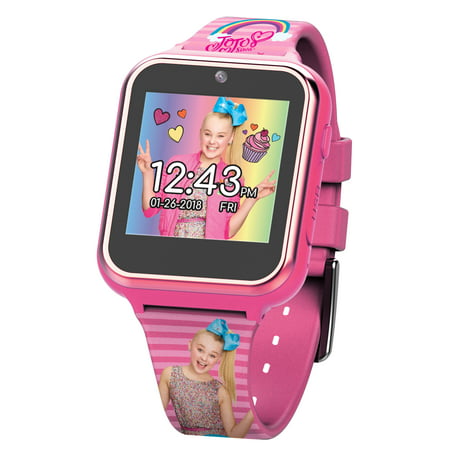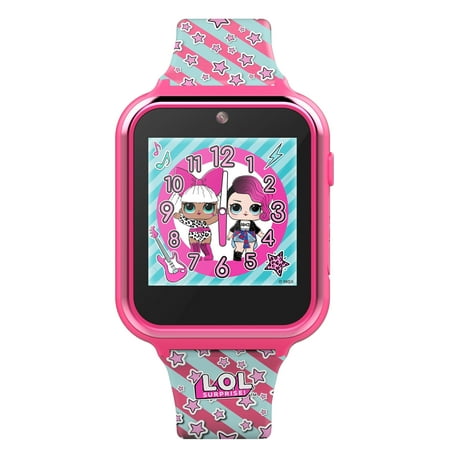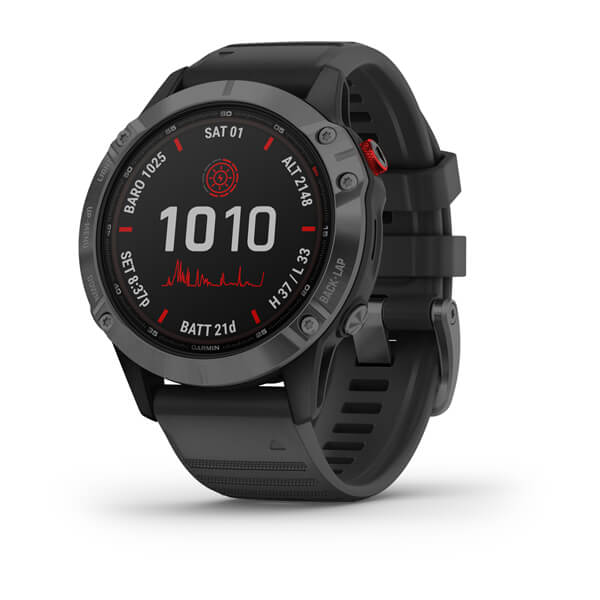Vinton 38mm|Black Dial – Stainless Steel Bracelet | Shinola® Detroit
-
( 5 Reviews )Rated 5.00 out of 5 based on 5 customer ratings05
The Vinton, named after a neo-classical building in Detroit’s Financial District, effortlessly exudes modern sophistication. Designed with a silhouette that flows together seamlessly.
-
$29.99
$55.63JoJo Siwa iTime Kids Smart Watch, 40 mm
$29.99$55.63 -
$29.99
$43.99L.O.L. Surprise! iTime Kids Smart Watch, 40 MM
$29.99$43.99
The Vinton, named after a neo-classical building in Detroit’s Financial District, effortlessly exudes modern sophistication. Designed with a silhouette that flows together seamlessly—from the dial to the case to the bracelet—this timepiece embodies a captivating casual style and comfortably fits on the wrist. Featuring a matte black velvet dial, engravable caseback and a stainless steel bracelet, this 38mm Vinton is a timeless classic that you’ll never want to leave home without.
THE ARGONITE 705
The high-accuracy quartz movement drives the hours, minutes, seconds and date function with precision. It is built in Detroit with Swiss and imported parts.
POLISHED STAINLESS STEEL CASE
This polished stainless steel case looks great at every angle. Designed specifically with personalization in mind, the caseback features a clean surface, perfect for engraving—whether to celebrate a birthday, anniversary, retirement or just to add a special touch. The case also features a pumpkin crown with a modern twist and double-domed sapphire crystal. Sapphire is second only to the diamond in hardness, helping protect the watch from scratches.
MATTE BLACK VELVET DIAL
Exhibiting a vintage charm, this matte black velvet dial features boldly printed Arabic numerals and a refined minute track. Additional highlights include a calendar aperture at the 3 o’clock marker and Super-LumiNova hands in silver tones.
STAINLESS STEEL BRACELET
Crafted from alternating brushed and polished stainless steel, this three-link bracelet adds refinement to this 32mm Vinton. It features a fold-over buckle with micro-adjustment capabilities to ensure a secure fit. It’s also removable, making the timepiece customizable with the purchase of an additional strap.
A WOODEN BOX TO TREASURE
Built from premium wood, every Shinola watch box is designed to last for generations.
Additional information
| CASE SIZE | 38mm |
|---|---|
| CASE THICKNESS | 9.02 mm |
| BAND MATERIAL | Stainless Steel Bracelet |
| STRAP WIDTH | 18mm |
| CASE MATERIAL | Stainless Steel |
| CASE PLATING | Stainless Steel |
| CASE FINISH | Polished |
| CROWN PLATING | Stainless Steel |
| CROWN FINISH | Polished |
| BUCKLE SIZE | 16mm |
| DEPTH RATING | 5 ATM |
Black is a color that results from the absence or complete absorption of visible light. It is an achromatic color, without chroma, like white and grey. It is often used symbolically or figuratively to represent darkness. Black and white have often been used to describe opposites such as good and evil, the Dark Ages versus the Age of Enlightenment, and night versus day. Since the Middle Ages, black has been the symbolic color of solemnity and authority, and for this reason it is still commonly worn by judges and magistrates.
Black was one of the first colors used by artists in Neolithic cave paintings. It was used in ancient Egypt and Greece as the color of the underworld. In the Roman Empire, it became the color of mourning, and over the centuries it was frequently associated with death, evil, witches, and magic. In the 14th century, it was worn by royalty, clergy, judges, and government officials in much of Europe. It became the color worn by English romantic poets, businessmen and statesmen in the 19th century, and a high fashion color in the 20th century. According to surveys in Europe and North America, it is the color most commonly associated with mourning, the end, secrets, magic, force, violence, fear, evil, and elegance.
Black is the most common ink color used for printing books, newspapers and documents, as it provides the highest contrast with white paper and thus is the easiest color to read. Similarly, black text on a white screen is the most common format used on computer screens. As of September 2019, the darkest material is made by MIT engineers from vertically aligned carbon nanotubes.
A bracelet is an article of jewellery that is worn around the wrist. Bracelets may serve different uses, such as being worn as an ornament. When worn as ornaments, bracelets may have a supportive function to hold other items of decoration, such as charms. Medical and identity information are marked on some bracelets, such as allergy bracelets, hospital patient-identification tags, and bracelet tags for newborn babies. Bracelets may be worn to signify a certain phenomenon, such as breast cancer awareness, or for religious/cultural purposes.
If a bracelet is a single, inflexible loop, it is often called a bangle. When it is worn around the ankle it is called an ankle bracelet or anklet. A boot bracelet is used to decorate boots. Bracelets can be manufactured from metal, leather, cloth, plastic, bead or other materials, and jewellery bracelets sometimes contain jewels, rocks, wood, shells, crystals, metal, or plastic hoops, pearls and many more materials.
Detroit ( dih-TROYT, locally also DEE-troyt) is the most populous city in the U.S. state of Michigan. It is situated on the bank of the Detroit River across from Windsor, Ontario. It had a population of 639,111 at the 2020 census, making it the 26th-most populous city in the United States and the largest U.S. city on the Canada–United States border. The Metro Detroit area, home to 4.3 million people, is the second-largest in the Midwest after the Chicago metropolitan area and the 14th-largest in the United States. The seat of Wayne County, Detroit is a significant cultural center known for its contributions to music, art, architecture and design, in addition to its historical automotive and industrial background.
In 1701, Royal French explorers Antoine de la Mothe Cadillac and Alphonse de Tonty founded Fort Pontchartrain du Détroit. During the late 19th and early 20th century, it became an important industrial hub at the center of the Great Lakes region. The city's population rose to be the fourth-largest in the nation by 1920, with the expansion of the automotive industry in the early 20th century. One of its main features, the Detroit River, became the busiest commercial hub in the world. In the mid-20th century, Detroit entered a state of urban decay which has continued to the present, as a result of industrial restructuring, the loss of jobs in the auto industry, and rapid suburbanization. Since reaching a peak of 1.85 million at the 1950 census, Detroit's population has declined by more than 65 percent. In 2013, Detroit became the largest U.S. city to file for bankruptcy, but successfully exited in 2014.
Detroit is a port on the Detroit River, one of the four major straits that connect the Great Lakes system to the St. Lawrence Seaway. The city anchors the third-largest regional economy in the Midwest and the 16th-largest in the United States. It is also best known as the center of the U.S. automotive industry, and the "Big Three" auto manufacturers—General Motors, Ford, and Stellantis North America (Chrysler)—are all headquartered in Metro Detroit. It houses the Detroit Metropolitan Airport, one of the most important hub airports in the United States. Detroit and its neighboring Canadian city Windsor constitute the second-busiest international crossing in North America, after San Diego–Tijuana.
Detroit's culture is marked with diversity, having both local and international influences. Detroit gave rise to the music genres of Motown and techno, and also played an important role in the development of jazz, hip-hop, rock, and punk. A globally unique stock of architectural monuments and historic places was the result of the city's rapid growth in its boom years. Since the 2000s, conservation efforts have managed to save many architectural pieces and achieve several large-scale revitalizations, including the restoration of several historic theaters and entertainment venues, high-rise renovations, new sports stadiums, and a riverfront revitalization project. Detroit is an increasingly popular tourist destination which caters to about 16 million visitors per year. In 2015, Detroit was given a name called "City of Design" by UNESCO, the first and only U.S. city to receive that designation.
Shinola is a defunct American brand of shoe polish. The Shinola Company, founded in Rochester, New York in 1877, as the American Chemical Manufacturing and Mining Company, produced the polish under a sequence of different owners until 1960. "Shinola" was a trade name and trademark for boot polish. The suffix -ola is a popular component of trade names in the United States. It was popular during the first half of the 20th century and entered the American lexicon in the phrase, "You don't know shit from Shinola," meaning to be ignorant. The brand name was acquired by the retail company Shinola in 2011.
Stainless may refer to:
- Cleanliness, or the quality of being clean
- Stainless steel, a corrosion-resistant metal alloy
- Stainless Games, a British video game developer
- Stainless Broadcasting Company, a TV broadcaster based in Michigan, US
- Stainless Banner, the second national flag of the Confederate States of America
Steel is an alloy of iron and carbon with improved strength and fracture resistance compared to other forms of iron. Because of its high tensile strength and low cost, steel is one of the most commonly manufactured materials in the world. Steel is used in buildings, as concrete reinforcing rods, in bridges, infrastructure, tools, ships, trains, cars, bicycles, machines, electrical appliances, furniture, and weapons.
Iron is always the main element in steel, but many other elements may be present or added. Stainless steels, which are resistant to corrosion and oxidation, typically are 11% chromium.
Iron is the base metal of steel. Depending on the temperature, it can take two crystalline forms (allotropic forms): body-centred cubic and face-centred cubic. The interaction of the allotropes of iron with the alloying elements, primarily carbon, gives steel and cast iron their range of unique properties. In pure iron, the crystal structure has relatively little resistance to the iron atoms slipping past one another, and so pure iron is quite ductile, or soft and easily formed. In steel, small amounts of carbon, other elements, and inclusions within the iron act as hardening agents that prevent the movement of dislocations.
The carbon in typical steel alloys may contribute up to 2.14% of its weight. Varying the amount of carbon and many other alloying elements, as well as controlling their chemical and physical makeup in the final steel (either as solute elements, or as precipitated phases), impedes the movement of the dislocations that make pure iron ductile, and thus controls and enhances its qualities. These qualities include the hardness, quenching behaviour, need for annealing, tempering behaviour, yield strength, and tensile strength of the resulting steel. The increase in steel's strength compared to pure iron is possible only by reducing iron's ductility.
Steel was produced in bloomery furnaces for thousands of years, but its large-scale, industrial use began only after more efficient production methods were devised in the 17th century, with the introduction of the blast furnace and production of crucible steel. This was followed by the Bessemer process in England in the mid-19th century, and then by the open-hearth furnace. With the invention of the Bessemer process, a new era of mass-produced steel began. Mild steel replaced wrought iron. The German states were the major steel producers in Europe in the 19th century. American steel production was centred in Pittsburgh, Bethlehem, Pennsylvania, and Cleveland until the late 20th century. Currently, world steel production is centered in China, which produced 54% of the world's steel in 2023.
Further refinements in the process, such as basic oxygen steelmaking (BOS), largely replaced earlier methods by further lowering the cost of production and increasing the quality of the final product. Today more than 1.6 billion tons of steel is produced annually. Modern steel is generally identified by various grades defined by assorted standards organizations. The modern steel industry is one of the largest manufacturing industries in the world, but also one of the most energy and greenhouse gas emission intense industries, contributing 8% of global emissions. However, steel is also very reusable: it is one of the world's most-recycled materials, with a recycling rate of over 60% globally.






by Janet
I love my new watch! It is a replacement for a 30+ year old watch that I lost, and was heartbroken about. My husband found this one online, I liked the looks of the Vinton, and despite knowing nothing about the company, thought I would take a chance on it, based solely on the fact that it was made in the USA. Was very pleased when it quickly arriv…Read More
by Chelsea
I purchased this engraved watch, in the beautifully unique champagne tone, as a wedding gift for my partner. It is even more beautiful in person and has already become a fixture in their wardrobe. We are so thrilled with the quality of this timepiece, and were even more pleased to see how much care was put into the packaging and shipping.
by Robin
The watch is even more elegant in person! Sleek and looks amazing on. The engraving is beautiful and the watch arrived even sooner than expected!! THANK YOU!!!
by John
Look, sizing and function is perfect. Hope the gold finish holds up with time since it is beautiful. Packaging was well done. Overall great buying experience using your web site chat and store.
by Dan
Got this watch last year as I wanted to move away from smart watches. Just wanted something stylish that tells the time and date. This is perfect, its versatile and can be worn with any outfit. Its also well built so it can take a few knocks. Really happy with this watch.